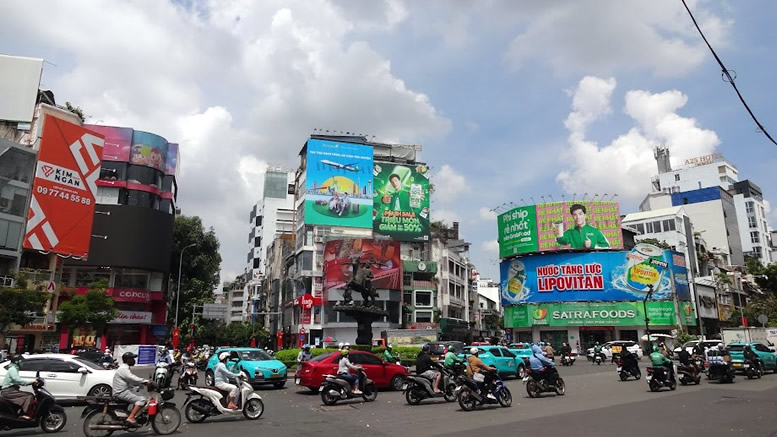Getting around Ho Chi Minh City is an exciting blend of modern conveniences and local traditions. As the largest city in Vietnam, its bustling streets are filled with a variety of transportation options that cater to every traveller’s needs, from taxis and motorbikes to buses and the soon-to-open metro system.
Ho Chi Minh City is well-known for its motorbike culture, with thousands of scooters zipping through its streets daily. For those who prefer the local experience, xe ôm (motorbike taxis) are readily available and offer a quick and affordable way to navigate the city. For tourists unfamiliar with the chaotic traffic, using ride-hailing services like Grab is a safer and more convenient alternative. Grab offers both car and motorbike rides, easily booked through the app, allowing you to travel efficiently while avoiding the stress of flagging down a ride on the street.
Taxis are another reliable option, with several reputable companies operating across the city. Vinasun and Mai Linh are two of the most trusted taxi companies, known for their regulated fares and professional drivers. For added convenience, these taxis can also be booked through their respective mobile apps.
Public buses offer the most budget-friendly option for getting around Ho Chi Minh City. The extensive bus network connects all major areas of the city, including popular tourist destinations such as Ben Thanh Market, the Reunification Palace, and the Notre-Dame Cathedral. While the buses are affordable, they can be challenging to navigate for non-Vietnamese speakers, but city maps and bus schedules are increasingly available in English.
The city’s transport system is set to be revolutionised with the opening of Metro Line No. 1 in late 2024. This long-awaited development will run 19.7 km from Ben Thanh Market in District 1 to Thu Duc City, covering key areas in Districts 1, 2, and 9. Once operational, the metro will significantly reduce traffic congestion and offer an efficient alternative to the busy streets of Ho Chi Minh City, making travel easier for both locals and tourists. The metro promises to reshape how people move around the city, providing quick and reliable transport to major hubs.
For shorter distances, walking can be an enjoyable way to explore Ho Chi Minh City, especially in the central areas like District 1. Many of the city’s iconic landmarks, shopping streets, and restaurants are within walking distance of one another. However, keep in mind that pedestrian infrastructure can be lacking in some areas, and crossing the road requires confidence and patience due to the heavy flow of motorbikes.
With the variety of transport options available and the upcoming metro system, getting around Ho Chi Minh City is becoming more accessible and convenient. Whether you choose to hop on a motorbike, book a Grab ride, or wait for the new metro, the city’s vibrant streets offer endless possibilities for exploration.





